

Heritage Day Essay Guide for Grade 10 Learners
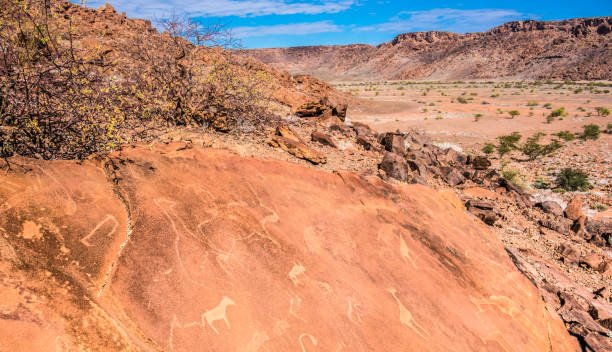
This page contains an essay guide for Grade 10 History learners on how to write a Heritage Day essay (introduction, body, and conclusion). On the 24th of September every year in South Africa, there is a great celebration of all cultures and heritages of all South Africans. This was after the Inkatha Freedom Party proposal in 1996.
Table of Contents
Background on South African Heritage Day
Before you write your essay, you should first know what heritage day is and what it means.
The word ‘heritage’ can be used in different ways. One use of the word emphasises our heritage as human beings. Another use of the word relates to the ways in which people remember the past, through heritage sites, museums, through the construction of monuments and memorials and in families and communities (oral history). Some suggest that heritage is everything that is handed down to us from the past.
One branch of Heritage Studies engages critically (debates) with issues of heritage and public representations of the past, and conservation.
It asks us to think about how the past is remembered and what a person or community or country chooses to remember about the past. It is also concerned with the way the events from the past are portrayed in museums and monuments, and in traditions. It includes the issue of whose past is remembered and whose past has been left unrecognised or, for example, how a monument or museum could be made more inclusive.
Important: you should include relevant images to go with your key points. You can find plenty of images on the internet, as long as you provide the credits/sources.
When you write your Heritage Day essay as a grade 10 student, you will get great marks if you include the following structure:
- Provide a brief history linked to heritage day
- The main key issues you will be discussing throughout your essay
- Explain the changes that were made to this public holiday.
- Explain how the day is celebrated in schools, families, workplaces and other institutions like churches etc.
- How does the celebration of the holiday bring unity and close the gaps of the past?
- Explain how the celebration of the day enforces the application of the constitution of South Africa.
- What key points did your essay cover?
- What new knowledge did you learn or discover?
- What are your views on “Heritage Day”?
Example of “Heritage Day” Essay for Grade 10 Students
Below is an example of how to write an essay about Heritage Day for grade 10 learners, using the structure discussed above:
Introduction:
Heritage Day, celebrated on the 24th of September, is a South African public holiday that serves as a reminder of the nation’s rich cultural heritage and diverse history. The day was established to honor the various cultures, traditions, and beliefs that make South Africa a truly unique and diverse country. This essay will discuss the history of Heritage Day, the changes made to this public holiday, and how its celebration promotes unity and reinforces the South African Constitution .
Changes to Heritage Day:
Initially known as Shaka Day, Heritage Day was introduced to commemorate the legendary Zulu King Shaka who played a significant role in unifying various Zulu clans into one cohesive nation. However, with the advent of a democratic South Africa in 1994, the day was renamed Heritage Day to promote a broader and more inclusive celebration of the nation’s diverse cultural heritage.
Celebrations in Various Institutions:
Heritage Day is celebrated in numerous ways throughout South Africa, with schools, families, workplaces, and religious institutions all participating. In schools, students and teachers dress in traditional attire, and activities such as cultural performances, food fairs, and storytelling sessions are organized to educate learners about different cultural backgrounds. Families gather to share traditional meals, pass down stories, and engage in cultural activities. Workplaces often host events that encourage employees to showcase their diverse backgrounds, while churches and other religious institutions use the day as an opportunity to emphasize the importance of tolerance and acceptance.
Promoting Unity and Closing Gaps:
The celebration of Heritage Day has played a vital role in fostering unity and bridging the divides of the past. By appreciating and acknowledging the various cultures and traditions, South Africans learn to respect and accept one another, ultimately creating a more harmonious society. The public holiday serves as a platform to engage in conversations about the nation’s history, allowing for a better understanding of the diverse experiences that have shaped South Africa.
Enforcing the South African Constitution:
Heritage Day also reinforces the principles enshrined in the South African Constitution, which guarantees cultural and linguistic rights to all citizens. By celebrating and embracing the diverse cultures, South Africans put into practice the values of equality, dignity, and freedom as envisioned by the Constitution.
Conclusion:
In this essay, we have explored the history and significance of Heritage Day, its transformation from Shaka Day, and how it is celebrated across various institutions in South Africa. We have also discussed how the celebration of this day fosters unity and enforces the principles of the South African Constitution. Heritage Day serves as a reminder that our differences make us stronger, and that through understanding and embracing our diverse backgrounds, we can build a more inclusive and united South Africa.
More Resources
Below are more previous resources you can download in pdf format:

Professor of Anthropology and Executive Dean of Arts , Nelson Mandela University
Disclosure statement
Rosabelle Boswell receives funding from the National Research Foundation.
Nelson Mandela University provides funding as a partner of The Conversation AFRICA.
View all partners
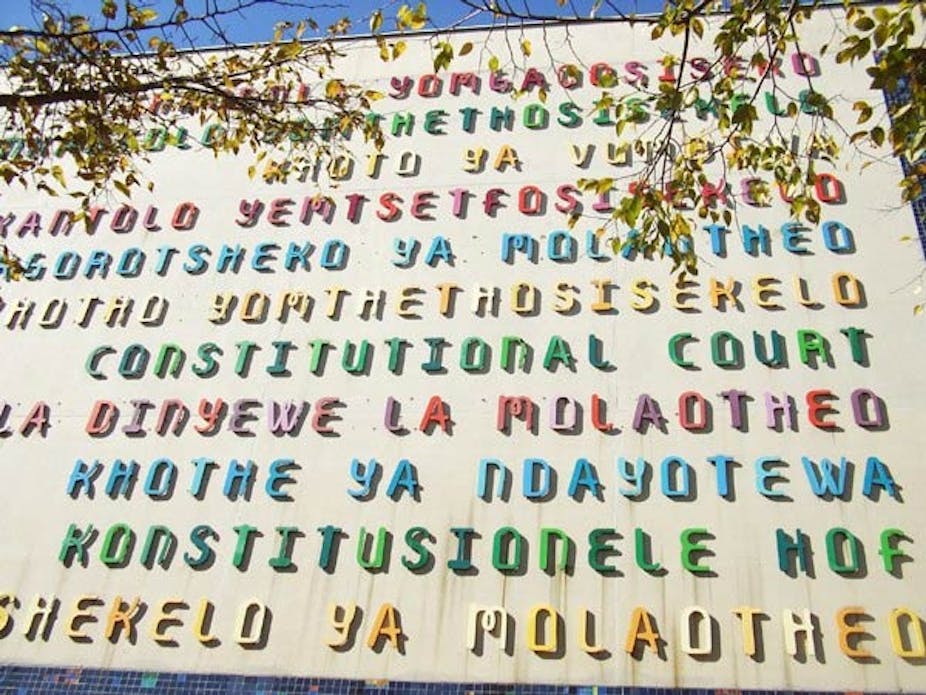
Foundation essay: This is a longer than usual article that takes a wider look at a key issue affecting society.
September is heritage month in South Africa. However, not many people may know that heritage and Heritage Day are much more than another chance for a barbeque, known locally as a braai.
In the past few years, many South Africans have come to associate Heritage Day with a good opportunity to do just that. On this day, some South Africans eat boerewors (homemade flavoured sausage) and drink beer. After all, Heritage Day is unofficially classified by some as ‘National Braai Day’. But heritage is much more than boerewors and beer. It is big business worldwide and has become part of a global toolkit for interpreting the past and forging the future.
A global phenomenon
In the past 50 years, the United Nations Education, Scientific and Cultural Council has inscribed more than 900 sites on its World Heritage List . Tourists from across the globe flock to these sites, earning major income for the nations concerned. A Global Heritage Fund study showed that 500 global heritage sites in the developing world are expected to generate over US $100 billion a year by 2025.
Authors on heritage are also prolific, as the literature is vast. Global conferences on heritage and tourism host thousands of anthropologists, tourism specialists, historians, archaeologists and development professionals. The experts debate the meaning of heritage, its commoditisation in the contemporary world, the impact of globalisation on culture, the loss of important monuments and artefacts through war, terrorism and colonisation. The presenters also debate the role of heritage in national political discourse, especially in emergent discourses in post-colonial states.
Sceptics among them argue that heritage has become that warm fuzzy blanket we use to nostalgically reflect on and evoke the past. We may look wistfully at statues of fallen war heroes and remember their contribution to peace, freedom and democracy, consolidating their place in history and collective memory. Heritage is also accused of inducing amnesia, encouraging a remembrance of certain things and a forgetting of others.
Authors argue that this is especially relevant in nations where the legacy of colonialism is still evident, where the political marginalisation or ‘othering’ of groups has led to the associated marginalisation of their heritage. Thus heritage management is rarely a neutral interpretation of the past.
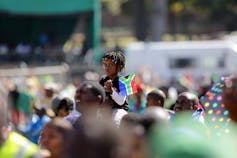
Symbols for the powerful, or for the people
In recent decades then, and certainly in global society, it has become abundantly clear that heritage is not merely a legacy or a gift that we pass from one generation to the next. It can become the symbolic capital of the powerful, their way for reproducing hegemony in the world. The latter is especially relevant when one takes a closer look at the World Heritage List, which indicates that many of the world heritages are situated in the global north.
The majority of tangible heritages identified on the World Heritage List are in North America and Europe. African heritages, many of which are intangible, are few on this list. One might surmise that a list prepared by a multinational organisation is not important, but as the Global Heritage Fund study shows , world heritage is a source of significant revenue. More important than revenue, heritage sites serve as important spaces and places for restorative justice, healing and pride.
The restoration of heritage can offer new narratives of the nation. The stories can also offer a space for democratisation, for the inclusion of women’s contributions to culture and identity. An uncritical ‘use’ of heritage, however, can also be detrimental and encourage what some have called a ‘cultural mosaic’ view of the world, separated and marked by difference.
In 2003, Unesco ratified its Convention for Safeguarding the Intangible Cultural Heritage . This was a welcome addition to its various, detailed conventions regarding the protection of cultural and natural heritages. But Unesco cannot enforce the protection and safeguarding of heritage. At least, there was not a case of it doing so, until very recently, when it condemned the Islamic State’s bombing of the Bel Temple in Palmyra as a war crime .
This critical decision on the part of the world body raises important questions that can be posed but not answered here. How do we decide what should be safeguarded? Can and should heritages last for all time? What kind of war crimes should we be foregrounding and focusing on?
Where heritage is woven into everyday life
Anthropological research in the southwest Indian Ocean shows that heritage is regional, dynamic, creolised and deeply intangible. The reason for its intangibility is that African slaves and Indian indentured labourers, as well as the islands’ many immigrant communities, could not bring all of their tangible artefacts with them. In most instances, those of African and Indian descent were denigrated and denied their cultural identity.
The heritages which these populations hold, however, now find expression in everyday actions and places. From the honouring of ancestors to the composition of music (in the Sega of Mauritius for example) and the attention to oralature, the creolised people of the islands occupy a rich and culturally dynamic social world. On the magical island of Zanzibar, for instance, identities and heritages are imbued with scent.
The use of ylang-ylang, patchouli and vanilla infuse cultural rituals and mark off cultural boundaries. Scent is used to ward off evil and illness and aroma used to attract romance and health. History is described in scented terms, a time of glorious fragrant harmony and the displeasure and stink of present corruption.
In Madagascar, ancestral veneration is still significant and is replete with a range of cultural practices which find unique expression in different parts of the island. Heritage is evident in wood carving, a unique maritime ethos (in the sand drawing of the Vezo in the south of the island), in food and in hair styling. There are, for instance, the ‘braids of love’ (which for women symbolises one’s desire to find a true and lasting love) or braids signifying that one has recently become a mother.
Celebrating the present rather than the past
To return to the incredibly culturally rich continent of Africa and South Africa in particular, one finds an equally rich set of heritages. This is evident in the country’s 11 official languages, the dress of its indigenous peoples, the cultural rituals they share and in the music they compose and sing. Heritage is also evident in the philosophy of Ubuntu , in the political heritage of liberation and in the multifarious contributions of the nations’ diverse immigrant and settler populations. Ubuntu concerns the collective idealised behaviour and practice, produced by communities over a long period of time.
National Braai Day is, as one anthropology colleague once argued, a way to achieve a universal, apolitical symbol of national unification. However and in view of the ongoing Rhodes Must Fall movement , in which there is the removal and ‘defacing’ of colonial monuments across the country as part of efforts to reclaim the present by effacing the past, one finds that there is little focus on the existing bio and cultural diversity of South Africa and a true celebration of these things in all their complexity.
The braai, delicious as it is, is not exactly post-apartheid or un-gendered food. Some might say that it enacts a nostalgic image of (male, settler) farmers gathered around a fire, drinking their home brew and eating homemade sausages in the veld . It is almost a return in the urban ‘jungle’, to an authentic or imagined past. Perhaps contemporary, post-apartheid South Africa should not lose itself in the boerewors and the braai.
Nevertheless, we should be careful not to throw the boerewors out with the braai, as no two boerewors are the same and the braai is different across South Africa, as each person or ‘community’ brings its own flavour to the feast.
- UNESCO World Heritage sites

Program Manager, Teaching & Learning Initiatives

Lecturer/Senior Lecturer, Earth System Science (School of Science)

Sydney Horizon Educators (Identified)

Deputy Social Media Producer

Associate Professor, Occupational Therapy

Essay on World Heritage Day
Students are often asked to write an essay on World Heritage Day in their schools and colleges. And if you’re also looking for the same, we have created 100-word, 250-word, and 500-word essays on the topic.
Let’s take a look…
100 Words Essay on World Heritage Day
Introduction.
World Heritage Day, celebrated on 18th April every year, is a day to honor and preserve the rich heritage that defines us as human beings.
Significance
This day serves as a reminder of how our past has shaped our present. It emphasizes the importance of safeguarding diverse cultural and natural heritages around the world.
Celebration
People celebrate by visiting historical monuments and sites. Schools organize exhibitions and workshops to educate students about the significance of heritage.
World Heritage Day is a call to preserve our rich heritage for future generations, reminding us that our past is the foundation for our future.
Also check:
- 10 Lines on World Heritage Day
- Paragraph on World Heritage Day
- Speech on World Heritage Day
250 Words Essay on World Heritage Day
World Heritage Day, celebrated on 18th April every year, is a global observance that underscores the collective responsibility of the international community to preserve and respect cultural and natural heritage. This day is an opportunity to raise public awareness about the diversity of cultural heritage and the efforts required to protect and conserve it.
The Importance of World Heritage Day
World Heritage Day is not just about celebrating the world’s monuments and sites, but it also emphasizes the importance of safeguarding our shared heritage for future generations. It provides a platform for us to reflect on the significance of these sites, their intrinsic value, and the challenges they face, such as climate change, urbanization, and armed conflict.
Global Cooperation
The celebration of World Heritage Day promotes international cooperation. It is a reminder that protecting and preserving these sites requires global efforts. The United Nations Educational, Scientific and Cultural Organization (UNESCO) plays a crucial role in this, identifying and cataloging sites of outstanding universal value that deserve our protection and preservation.
Role of Individuals
World Heritage Day also emphasizes the role of individuals. Each person can contribute to the preservation and conservation of these sites, whether by raising awareness, volunteering, or supporting policies that protect these sites.
World Heritage Day is a call to action for all of us. It reminds us of our shared responsibility to protect and preserve our world’s cultural and natural heritage, not just for ourselves, but for future generations. It is an opportunity to celebrate our shared heritage, while also acknowledging the ongoing challenges and the need for collective action.
500 Words Essay on World Heritage Day
Introduction: the significance of world heritage day.
World Heritage Day, celebrated annually on April 18th, is a testament to humanity’s rich cultural and natural heritage. The day is dedicated to raising awareness about the diversity of our world’s heritage, its vulnerability, and the efforts required for its protection and conservation.
The Genesis of World Heritage Day
World Heritage Day, also known as International Day for Monuments and Sites, was proposed by the International Council on Monuments and Sites (ICOMOS) on 18th April 1982 and approved by UNESCO in 1983. The day is a response to the global call for a collective effort to preserve the world’s cultural and natural heritage.
The Importance of World Heritage Sites
World Heritage Sites, as recognized by UNESCO, are places of outstanding cultural or natural importance to the common heritage of humanity. They are irreplaceable sources of life and inspiration, symbolizing a legacy from the past, a reflection of our present, and a bridge to our future. These sites range from ancient ruins, historical structures, to natural landscapes, each providing unique insights into civilizations and ecosystems that have shaped our world.
World Heritage Day: A Global Celebration
World Heritage Day is not just a day of celebration, but also a day of responsibility. It provides an opportunity to raise public awareness about the diversity of cultural heritage and the efforts required to protect and conserve it. Communities around the world engage in various activities such as exhibitions, heritage walks, seminars, and public speeches. These activities aim to foster a dialogue about the preservation of our shared heritage and its sustainable management.
The Role of Technology in Heritage Conservation
In the digital age, technology plays a pivotal role in heritage conservation. Advanced tools like 3D scanning and digital mapping enable accurate documentation of heritage sites, while AI and machine learning can predict and mitigate potential threats. Social media platforms facilitate global awareness, engaging a wider audience in heritage conservation efforts.
Challenges and the Way Forward
Despite the concerted efforts, heritage sites worldwide face numerous threats, including urbanization, natural disasters, climate change, and conflict. The key to overcoming these challenges lies in international cooperation, sustainable management, and inclusive policies that respect local communities’ rights and interests.
Education plays a crucial role in this endeavor. By incorporating heritage education in academic curricula, we can instill in future generations the value of our shared heritage and the importance of its preservation.
Conclusion: Our Shared Responsibility
World Heritage Day reminds us of our shared responsibility towards our past and our duty to pass it on to future generations. It is an invitation to celebrate our shared heritage, understand its significance, and commit to its preservation. As we celebrate World Heritage Day, let us pledge to safeguard our shared heritage, for it is in these testaments of the past that we find the roots of our present and the seeds of our future.
That’s it! I hope the essay helped you.
If you’re looking for more, here are essays on other interesting topics:
- Essay on Cultural Heritage
- Essay on Cultural Criticism
- Essay on Cryptocurrency
Apart from these, you can look at all the essays by clicking here .
Happy studying!
Leave a Reply Cancel reply
Your email address will not be published. Required fields are marked *
Save my name, email, and website in this browser for the next time I comment.
studpaper.com
Home / Samples / Culture / Essay Example: Heritage Day Essay
Essay Example: Heritage Day Essay
Heritage Day: Celebrating Diversity and Preserving Traditions
Introduction:
Heritage Day is a celebration that holds great significance in various countries around the world. It is a day dedicated to recognizing and honoring the rich tapestry of cultural diversity that defines a nation’s identity. This essay explores the importance of Heritage Day, its origins, and the ways in which it contributes to the preservation of traditions and the fostering of national unity.
Origins of Heritage Day:
The concept of Heritage Day has its roots in the need to promote and appreciate cultural diversity. In South Africa, for instance, Heritage Day emerged in the post-apartheid era as a way to celebrate the nation’s cultural wealth and unity. Former President Nelson Mandela played a pivotal role in emphasizing the importance of cultural heritage as a tool for reconciliation and nation-building. The idea was to encourage people of all backgrounds to take pride in their unique cultural heritage, fostering understanding and unity in a historically divided nation.
Similarly, many other countries have adopted similar celebrations to highlight the importance of cultural diversity and heritage preservation. Whether it’s India’s Republic Day or Canada’s Heritage Day, these celebrations serve as a reminder of the need to embrace and respect different cultures within a nation.
Preserving Cultural Traditions:
Heritage Day plays a crucial role in preserving cultural traditions that may be at risk of fading away in the fast-paced modern world. As societies evolve and become more interconnected, there is a risk of cultural homogenization, where unique traditions and practices are lost or diluted. Heritage Day serves as a reminder that these traditions are an integral part of a nation’s identity and contribute to its cultural richness.
Through various events, performances, and educational initiatives organized on Heritage Day, communities can actively engage in the preservation of their cultural heritage. This may include traditional dances, music performances, storytelling sessions, and exhibitions showcasing artifacts and historical documents. By actively involving the younger generation, Heritage Day becomes a platform for passing down cultural knowledge from one generation to the next, ensuring that traditions are not lost with time.
Fostering National Unity:
Celebrating Heritage Day fosters a sense of national unity by emphasizing the shared values and diverse backgrounds that make up a nation. It provides an opportunity for people from different cultural, ethnic, and religious backgrounds to come together, appreciate each other’s heritage, and celebrate the common threads that bind them as a nation.
In many countries, Heritage Day is marked by community events that encourage participation from all segments of society. Whether it’s a multicultural festival, a heritage walk, or a community feast showcasing diverse cuisines, these activities create a sense of belonging and shared identity. This shared experience helps break down stereotypes, reduce prejudices, and build bridges between different communities, contributing to a more cohesive and harmonious society.
Educational Significance:
Heritage Day serves as an educational platform, offering insights into the history, traditions, and customs of various communities. Educational institutions often play a crucial role in organizing activities that promote cultural understanding and appreciation. Students may engage in research projects, presentations, and cultural exchange programs that deepen their knowledge of different heritage aspects.
Furthermore, Heritage Day encourages the development of inclusive curricula that reflect the diversity of the population. By incorporating a broader range of cultural perspectives into education, societies can ensure that future generations grow up with a more comprehensive understanding of their heritage and that of others. This, in turn, contributes to the cultivation of open-mindedness, tolerance, and respect for diversity.
Economic Impact:
Beyond its cultural and social significance, Heritage Day can have a positive economic impact. Cultural tourism often thrives during these celebrations, as people from different regions and even other countries travel to participate in or witness the diverse festivities. Local businesses, such as restaurants, hotels, and artisans, may experience increased economic activity during Heritage Day events, contributing to the overall development of the community.
Additionally, the promotion of traditional crafts, artworks, and products during Heritage Day celebrations can provide a platform for local artisans to showcase their skills and generate income. This economic dimension adds another layer of importance to Heritage Day, highlighting its potential to support local economies while celebrating cultural heritage.
Challenges and Opportunities:
While Heritage Day brings numerous benefits, there are also challenges to ensuring its effectiveness in promoting cultural diversity and heritage preservation. One significant challenge is the risk of cultural appropriation, where aspects of a particular culture are taken out of context or exploited for commercial gain. It is crucial to approach Heritage Day with sensitivity and respect, avoiding the commodification of cultural practices and ensuring that the celebration remains authentic and inclusive.
Moreover, Heritage Day should not be a one-day affair but rather part of ongoing efforts to promote cultural diversity and heritage preservation. Governments, communities, and individuals should collaborate in developing long-term strategies, policies, and initiatives that address the root causes of cultural erosion and work towards sustainable heritage conservation.
Conclusion:
In conclusion, Heritage Day is a celebration that goes beyond mere festivities; it is a powerful tool for fostering unity, preserving traditions, and promoting cultural diversity. As societies navigate the complexities of the modern world, the importance of recognizing and appreciating cultural heritage becomes increasingly evident. By actively engaging in Heritage Day celebrations, individuals and communities contribute to the ongoing narrative of their nation, ensuring that the tapestry of cultural diversity remains vibrant and resilient for generations to come.
Related Samples:
- Essay Example: The Problem of Racial, Ethnic and Cultural Discrimination in South Africa
- Title: A Harmonic Fusion: Exploring the Dynamic Interplay of Pop Music and Hip-Hop
- Title: Thematic Motifs of Magical Realism in One Hundred Years of Solitude
- Essay Example: Overview of the African Community Services of Peel Organization
- Essay Example: Essay on Traditions of Chinese New Year
- Essay Example: The Role Of Religion In China
Looking for this or a Similar Assignment? Click below to Place your Order

Request for Studpaper Writing Service Today!
With a team of over 1500 homework writing experts, we are prepared and eager to assist you in enhancing your writing skills
Who We Are Contact Us FAQs
Privacy Policy Cookie Policy Refund Policy Revision Policy Terms and conditions Fair user disclaimer
Blog Pricing Samples Expert

Using this writing service is legal and is not prohibited by any university/college policies. MD: Looking for technical writing help? Get professional technical writing help from our academic experts
The papers we provide at Studpaper should serve as model and reference papers for our clients. These research papers should solely be used for reference purposes.
Copyright © 2024 Studpaper. All rights reserved.
Celebrating Unity in Diversity: Heritage Day in South Africa
South Africa is a country renowned for its rich cultural diversity, where people of various backgrounds, languages, and traditions coexist harmoniously. A significant celebration that embodies this cultural tapestry is Heritage Day, observed on September 24th each year.

This day is a reflection of the nation’s commitment to celebrating and preserving its unique heritage. In this blog, we’ll delve into the significance, history, and customs of Heritage Day in South Africa.
The Significance of Heritage Day
Heritage Day, also known as “Braai Day,” serves as a reminder of the importance of embracing and cherishing South Africa’s cultural mosaic. It encourages South Africans to take pride in their roots, whether they are Zulu, Xhosa, Afrikaans, Indian, or any of the other diverse groups that call the country home. This celebration fosters unity by recognizing that the nation’s strength lies in its diversity.
Historical Roots
The roots of Heritage Day can be traced back to the early 1990s when South Africa was undergoing a profound transformation from apartheid to democracy. During this time, there was a growing desire to foster unity among the nation’s diverse population. In 1995, the government officially declared September 24th as Heritage Day to encourage South Africans to celebrate their cultural heritage.
Braai Day Tradition
One of the most beloved aspects of Heritage Day is the tradition of “braai,” a South African barbecue. On this day, families and friends gather to enjoy a feast of grilled meats, traditional dishes, and homemade treats. The sizzling sound of meat on the grill and the aroma of spices fill the air as people come together to share food and stories. It’s a time to bond, strengthen relationships, and appreciate the culinary diversity that South Africa offers.
Cultural Celebrations
Heritage Day is not just about food; it’s also about showcasing the nation’s vibrant cultures. Throughout South Africa, you can find cultural festivals, performances, and exhibitions on this day. People dress in their traditional attire, dance to traditional music, and participate in various cultural activities. It’s an opportunity to learn about and experience the richness of South Africa’s heritage.
Promoting Tolerance and Understanding
In a country with a history of deep-seated divisions, Heritage Day plays a vital role in promoting tolerance and understanding. It encourages conversations about the past while emphasizing the importance of embracing diversity and building a united future. By celebrating their heritage together, South Africans contribute to the ongoing process of reconciliation and nation-building.
Heritage Day in South Africa is a beautiful celebration of unity in diversity. It reminds us that a nation’s strength lies in its ability to cherish its cultural heritage while embracing the differences that make it unique. As South Africans gather around the braai fires and celebrate their traditions, they send a powerful message: that diversity is a source of strength, and heritage is a bridge that connects us all.
Heritage Day Around South Africa
View this post on Instagram A post shared by The Waffle House | Ramsgate (@wafflehouseza)
View this post on Instagram A post shared by Thembalitsha Foundation (@thembalitsha)
View this post on Instagram A post shared by The Kusasa Project 🇿🇦 (@thekusasaproject)

Leave a Reply Cancel reply
You must be logged in to post a comment.
Stay in touch
Fill in your email to receive occasional updates from The Expedition Project. We will never share your address and you can opt-out at any time.


National Heritage Day in South Africa: What is Heritage Day and Why Do We Celebrate It
Sep 13, 2021 | News , South Africa
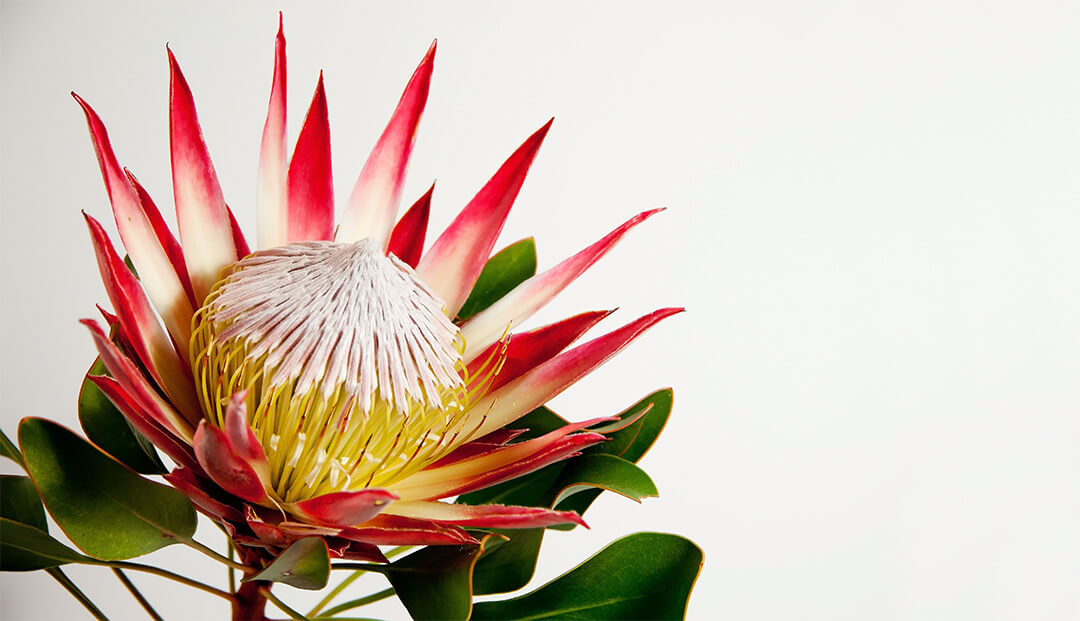
First published in September 2019, updated in September 2021.
September is Heritage Month in South Africa, with National Heritage Day celebrated on 24 September
Each year in early spring, people across the nation get together to eat, drink and be merry, celebrating what makes us all uniquely South African.
Heritage Day was declared a public holiday in 1996 and, since then, the 24th of September has been a day that encourages us to celebrate our cultural traditions, communities and heritage.
In the following post, we discuss South Africa’s Heritage Day; how it began, the connection to braais and how you can celebrate this year.
What is Heritage Day?
Heritage Day is a public holiday celebrated on 24 September in South Africa that recognises and celebrates the cultural diversity of the country. In its essence, the day embraces and celebrates the true meaning of why we call ourselves the Rainbow Nation.
South Africans mark the day by wearing traditional outfits, eating traditional foods, learning about different cultures and spending time with friends and family.
The History of Heritage Day in South Africa
The 24th of September marks ‘Shaka Day’ or ‘Shaka’s Day’, a day which commemorates the legendary King Shaka Zulu. Shaka Zulu played an important role in uniting different Zulu clans into one cohesive Zulu nation in Kwa-Zulu Natal. Each year, thousands of people gather at King Shaka’s grave to pay tribute to him and to honour his memory.
To learn more about the history, life and legend of King Shaka Zulu, the Anglo Zulu war and Zulu culture, book either the:
- KwaZulu-Natal Shakaland Zulu Village Tour
- Half-Day Soweto Tour
- PheZulu Cultural Village Day Tour
- Isandlwana and Rorke’s Drift Battlefields Tour
- Robben Island Half-Day Tour
You can also learn more about King Shaka in the book Shaka Zulu: The Biography of the Founder of the Zulu Nation by E.A. Ritter .
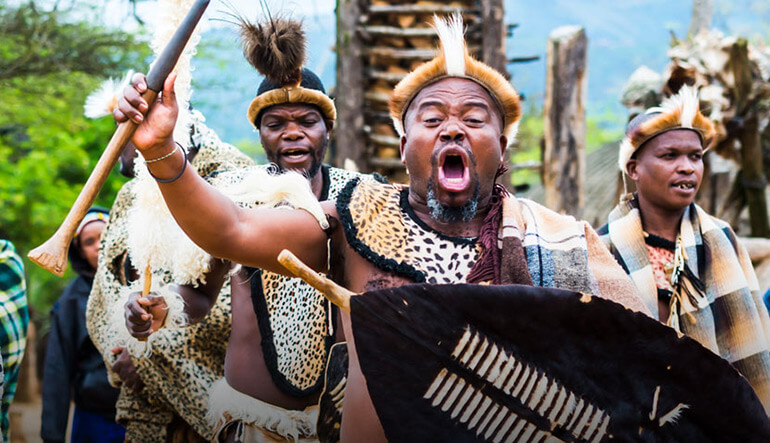
When the New South African Parliament omitted Shaka Day from the proposed Public Holidays Bill, the Inkatha Freedom Party (IFP), a South African political party with a large Zulu membership, objected.
Eventually, a compromise was reached, and it was decided that a national holiday would be created where South Africans of all cultures and creeds could come together and celebrate their diverse cultural heritage.
In an address marking Heritage Day in 1996, the late former State President Nelson Mandela said, “When our first democratically-elected government decided to make Heritage Day one of our national days, we did so because we knew that our rich and varied cultural heritage has a profound power to help build our new nation.”
We did so, knowing that the struggles against the injustice and inequities of the past are part of our national identity; they are part of our culture. We knew that, if indeed our nation had to rise like the proverbial phoenix from the ashes of division and conflict, we had to acknowledge those whose selfless efforts and talents were dedicated to this goal of non-racial democracy.
In more recent years, National Heritage Day has become synonymous with National Braai (Barbecue) Day . Some call it Shisa Nyama or Ukosa , while others call it a braai , but whatever the occasion, nothing beats gathering around a wood fire to cook a meal and celebrate together.

Why Do We Braai on Heritage Day?
There is nothing more South African than lighting a fire and cooking a meal, and it’s something that crosses racial, cultural, religious and social boundaries. The National Braai Day in South Africa was developed by Stellenbosch native, Jan Scannell – more commonly known as ‘Jan Braai’ – who quit his job in finance in 2005 to focus on the National Braai Day Initiative.
Just like the Irish have St Patrick’s Day, the French have Bastille Day and Australians have Australia Day, National Braai Day calls on all South Africans to unite around fires and share and celebrate our unique culture and heritage.
In 2007, Archbishop Desmond Tutu became patron of South Africa’s Braai Day, backing the idea that donning an apron to braai a boerewors (farm sausage) could be a unifying force in a country that had been previously divided. The following year, the initiative received the endorsement of South Africa’s National Heritage Council. It couldn’t be a more apt way to bring a rich and culturally diverse nation such as South Africa together in unity, because what good South African doesn’t love a braai?
How You Can Celebrate Heritage Day
There are plenty of opportunities to celebrate South Africa. Here are six ways to enjoy this year’s Heritage Day.
- Join chef Annie Badenhorst at Benguela Cove Wine Estate in Hermanus for their Heritage Day Braai on 24 September at 12pm. Guests can select either a delicious gourmet braai picnic basket, or share a flavourful braai platter. There will also be live music and great South African vibes.
- Celebrate with the Vrede en Lust Heritage Day Box which includes a selection of wines, traditional spices and condiments. It’s a great box to gift to friends or purchase for your own Heritage Day picnic or braai.
- Cape Town is known for its delectable traditional dishes, so why not learn how to make them. Spend Heritage Day by booking a cooking class to learn some of the local favourites such as koeksisters, braaivleis and gatsby. One of our personal favourites is the Cape Malay style cooking classes offered in the historic area of Bo-Kaap. Some of our favourite cooking classes are from Lekka Kombuis and Ginger and Lime .
- Visit one of CapeNature’s 22 nature reserves in the Western Cape for free. Visitors to CapeNature can enjoy a free day entry to explore their natural heritage at selected reserve destinations from 13 to 20 September.
- Join a Heritage Day scenic cruise around the Durban Harbour. The cruise includes starters, a photoshoot, complimentary bottle of champagne (2 bottles per table of 10 people) and lunch.
- Discover the magic of Freedom Park in Pretoria with free entry on 24 September 2021.
How to Celebrate Your Own South African Heritage Day Anywhere in the World
If you’re not in South Africa, you can still celebrate a South African Heritage Day by hosting your own braai (or barbecue).
Here are a few essentials to get your National Braai Day celebration going:
- Charcoal
- A braai apron
- A complete grill tool set
- The Democratic Republic of Braai by Jan Braai recipe book
- A South African flag for decoration
- Ina Paarman’s Braai & Grill Seasoning to add some flavour to your meat (or vegetables)
- Your preferred selection of meat, vegetables, salads, bread and condiments
Whatever you choose to do to celebrate National Heritage Day, enjoy it with friends and family, wave the South African flag proudly, and remember your heritage and the place it holds in South Africa’s multicultural landscape.
Read about the other important public holidays in South Africa:
- What is Human Rights Day and Why We Celebrate on March 21
- What is Freedom Day in South Africa and Why Do We Celebrate It
- Why We Celebrate Youth Day on 16 June
- Why We Celebrate Women’s Day on August 9th
While not a public holiday, here’s how you can celebrate Mandela Day on 18 July .
Join our newsletter!
Sign up for travel tips and news from Africa delivered straight to your inbox! We won't send you spam or boring emails, we promise!
Thank you! Please check your inbox for a confirmation mail.
By joining our list, you agree to the terms of our privacy policy .

13 Comments
Nice information
Thank you! 🙂
whaaaaaaaaaaaaaaaaaaaaaaaaaaaaaaaat
Letitia thanks for informative and helpful information
What is the name and surname of the person who published all this Information am doing a school project about heritage please reply
Nice to read your blog!
Thanks 😊, now I know about 24 September
Yo u colll bro ur my step bro 😍🤞🏽
This is one of the best posts I have ever came across. Today we celebrate Heritage day “online” as a corporate company and guess what ? I will be using some of YOUR information to share with our special people ! I have learned so much in 7 to 8 of your first sentences ! Brilliant – what a lovely layout and professional, yet super light and great for culture day celebrations! Happy Heritage day and have a wonderful “BRAAI” !!!! … en melktert !
Thank you so much Vicky! We’re delighted that you found the post valuable. Have a lekker Heritage Day! 🙂
Thank you. I’m grateful. My brother’s assignment benefited much from it, and I also picked up some new knowledge.
This is wonderful
Trackbacks/Pingbacks
- My 6 favourite things about this Heritage Day weekend - Brat with a Blog - […] Thursday it was Heritage Day in South Africa. Heritage Day is a public holiday, so like many others Mr…
- Celebrate Heritage Day 2020 | Show National Pride This Heritage Day - […] African Travel Compass states that September 24th was originally Shaka Day. A day that commemorated the great Zulu king Shaka…
- 5 Historical sites you can visit this Heritage Day - Entertainment SA - […] Main Image: africantravel […]
- Heritage Month & Day - Leads 2 Business Blog - […] African Travel Canvas SA History National […]
- Braai, friends and pickled kumquats - Kriya Gangiah shares her take on Heritage Day - samachar24live.com - […] पहले ‘शाका दिवस’ कहा जाता था, 24 सितंबर महान राजा शाका ज़ुलु की याद दिलाता है, जो “क्वाज़ुलु-नताल में…
Submit a Comment Cancel reply
Your email address will not be published. Required fields are marked *
Latest Posts
- Africa’s Big Five and Where You Can View Them March 7, 2024
- The 5 Most Endangered Animals in Africa | Rare African Animals February 6, 2024
- What to Wear on Safari in Southern Africa Packing Guide & Tips January 16, 2024
- The Top 10 Best Places to Go Shopping in Cape Town November 20, 2023
- Top 10 Activities You Can Do on a Beach and Island Vacation in Southern Africa November 12, 2023
Pin It on Pinterest
- Projects Heartlines Fathers Matter What's Your Story? Values & Money
Nothing in your cart yet, add something .
Heritage Day reflections
We recently celebrated Heritage Day in our beloved South Africa. This led me to reflect on the heritage we have as a country with its diverse people and eleven official languages, which are Afrikaans, English, isiNdebele, Sepedi, Sesotho, siSwati, Xitsonga, Setswana), Tshivenda, isiXhosa and isiZulu. Language is part of our heritage and is linked to our identity. Sadly, for the Khoi and San people, South Africa’s first inhabitants do not have their languages recognised as official.
As a person of mixed race I struggled with my identity through childhood and my first few years at high school. This is a common challenge for many mixed race people in our country. During my high school years, I began to read the Bible more intensely and discovered my true identity in its pages – right from Genesis through to Revelation. In Genesis we discover Adam and Eve as the mother and father of all humankind. We also discover that we were made in God’s image. We learn in Ephesians 1:5 that “God decided in advance to adopt us into his own family by bringing us to himself through Jesus Christ. This is what he wanted to do, and it gave him great pleasure.” This discovery was life changing and brought about a freedom and acceptance of myself even though I do not know the full story of my biological heritage.
“…and there was a great multitude that no one could count, from every nation, from all tribes and peoples and languages, standing before the throne and before the Lamb, robed in white, with palm branches in their hands” Revelation 7:9. So, turn to the Bible with renewed curiosity to discover your true identity and family heritage for yourself.
Rainbow dream
Heritage Day also made me ask the question, “Is the dream of a true rainbow nation still possible?” Following the recent unrest and violence which took place in our country, particularly the murders in Phoenix, and with the narrative in the media of racism, and many conversations taking place referencing the 1949 riots, you begin to wonder if there is hope for our rainbow nation.
Last week I was privileged to be a part of a two-day Bridge Leadership Engagement with church leaders from the PINKU Region (Phoenix, Inanda, Ntuzuma, Kwa Mashu, Umhlanga/Durban North. I watched this group of ministers representing all the racial diversity in our country, connecting at a deeper level through the sharing of their stories. Watching them working together, identifying the problems in their communities and a commitment to finding solutions to build their communities and our beloved country. Part of our godly heritage is love and reconciliation which was exemplified in the life of Jesus Christ. Let us be practitioners of love and reconciliation because of Christ.
God put the first rainbow in the sky as a beacon of hope for Noah. This gives me a reason to hope that the dream of a rainbow nation is still alive!
Craig Bouchier
Craig is a Heartlines' regional representative who has worked in in different ministry roles for many years. Read more about Craig and his journey from playing soccer for AmaZulu FC, to climbing the corporate ladder and taking up his calling into ministry.
How to close the gap between a belief in good values, and ethical behaviour?
You may also like, rise up with hope.
Brett 'Fish' Anderson encourages us to fight for hope in the midst of the darkness and suffering we see in the world around us.
Remembering Sharpeville and reflecting on human rights
Olefile Masangane shares his thoughts on why we need to remember where we have come from as we commemorate Human Right's Day and observe Lent this March.
Advent reflection for 2021
Edwin Arrison shares how the hope of Christ can change our perspective and focus in a chaotic, painful world.
The hope of Spring
Relationship and family therapist Merrishia Singh-Naicker shares her thoughts on how we can enter into the new season of Spring with renewed hope, even as we honestly face the reality of increasing violence against women and girls.
We see you're enjoying the site
We have hundreds of digital downloads, guides, videos and other resources to help you and your community live out positive values. Sign up now to get access to resources, online courses and more from across all our projects.

Press ESC to close
Or check our popular categories....

How Does Heritage Day Bring Unity and Close the Gaps of the Past in South Africa? Essay
How Does Heritage Day Bring Unity and Close the Gaps of the Past in South Africa? – Essay
The celebration of heritage brings unity by fostering a shared sense of identity and pride among people. It connects individuals to their roots and helps bridge the gap between diverse cultures by showcasing their unique histories, traditions, and values. Through these celebrations, people develop a collective understanding and appreciation of their common origins and the diverse paths that have shaped their community.
Here’s how the celebration of heritage contributes to unity:
- Cultural Awareness: Increases understanding and respect for different customs and practices, reducing prejudices and promoting acceptance.
- Preservation of Traditions: Encourages the preservation of cultural practices and languages, which might otherwise be lost, strengthening community bonds.
- Educational Opportunities: Provides educational experiences for younger generations, teaching them about their history and the importance of diversity.
- Community Engagement: Brings people together through events and festivals, which facilitates dialogue and builds relationships among community members.
- Economic Benefits: Often, heritage celebrations can boost local economies through tourism and local crafts, which creates shared economic prosperity and fosters a sense of common purpose.
By valuing and celebrating heritage, communities can enhance their cohesion and create a more inclusive and supportive environment for all their members.
Table of Contents
In South Africa, Heritage Day , celebrated on the 24th of September , is a profound national holiday that recognises and celebrates the cultural wealth of the nation . It’s a day that reflects the country’s complex history, marked by apartheid, colonialism, and the struggle for freedom , and how its diverse cultures contribute to the nation’s identity. This essay delves into how Heritage Day in South Africa fosters unity and addresses historical divisions.
In a nutshell, Heritage Day brings unity and closes the gaps of the past in South Africa through:
- Celebrating Cultural Diversity : By showcasing the rich tapestry of cultures within the nation, Heritage Day encourages mutual respect and appreciation among different communities, fostering a sense of belonging and unity.
- Remembering Shared Histories : The day serves as a reminder of South Africa’s complex history, including the struggles against apartheid and colonialism, helping to build a shared national identity based on collective memories and experiences.
- Promoting Social Cohesion : Through various nationwide activities and events, such as communal braais (barbecues) and cultural exhibitions, Heritage Day provides opportunities for South Africans to come together, bridging social and cultural divides.
- Educational Impact : Heritage Day plays a crucial role in educating the younger generation about the country’s history and the importance of diversity, democracy, and unity, ensuring that the lessons of the past are remembered and valued.
- Acknowledging and Honoring the Struggle for Freedom : The day pays tribute to the heroes of the liberation struggle, acknowledging their sacrifices and inspiring a sense of pride and unity among all South Africans in the face of their common history of resistance and resilience.
Honouring Diverse Cultural Heritage to Foster Unity
Heritage Day in South Africa is a vibrant celebration of the rich tapestry of cultures that make up the nation’s identity. From the Zulu to the Xhosa, the Afrikaners to the Coloureds, and the Indian community, each group has its unique traditions and histories that are celebrated on this day.
- Promotion of Cultural Understanding : By showcasing the diverse cultural practices and histories of South Africa’s various ethnic groups, Heritage Day encourages understanding and appreciation among these communities. This mutual respect is fundamental to building a unified national identity.
- Breaking Down Historical Barriers : The day provides an opportunity for South Africans to reflect on their shared history of oppression and resistance. It acts as a bridge, connecting people through their collective memory of the struggle for freedom and equality, thereby helping to heal the divisions of the past.
Commemorating the Struggle for Freedom to Close Historical Gaps
Heritage Day is not just a celebration of cultural diversity but also a day to remember the long and arduous struggle against apartheid. This aspect of the holiday plays a critical role in closing the gaps left by South Africa’s troubled past.
- Recognition of Shared Struggles : The day pays homage to the heroes of the liberation struggle, acknowledging their sacrifices for freedom and democracy. This recognition helps to close the historical gaps by reminding all South Africans of their common fight against oppression.
- Educational Impact : Heritage Day serves as an educational tool that fosters a deeper understanding among the younger generation of South Africa’s history. Through events and narratives shared on this day, young people learn about the injustices of the past and the importance of unity and democracy, ensuring that the lessons of history are not forgotten.
Encouraging National Unity Through Celebration
The celebration of Heritage Day in South Africa is a powerful expression of national unity. Through its emphasis on diversity and shared history, the day plays a vital role in knitting the fabric of the South African nation more tightly together.

- Cultural Festivals and Events : Across the country, South Africans engage in a variety of activities, from braais (barbecues) which transcend cultural boundaries, to cultural exhibitions, dances, and music performances. These events serve as gatherings that bring people from different backgrounds together, promoting social cohesion and national unity.
- The Role of “Braai Day” : The informal nickname for Heritage Day, “ Braai Day ,” emphasizes the idea that sharing a meal is a universal way to connect people. This aspect of the celebration is a fun and inclusive way to encourage unity across cultural divides, symbolizing the nation’s diversity and the common ground found in celebrating together.
Heritage Day in South Africa plays a crucial role in promoting unity and bridging the historical gaps that have long divided the nation. By honouring the diverse cultural heritage of its people and commemorating the struggle for freedom, the day reinforces the values of mutual respect, understanding, and a shared national identity. In celebrating Heritage Day, South Africans reaffirm their commitment to overcoming the challenges of the past and building a united and prosperous nation for future generations.
Categorized in:
Like what you read?
Subscribe to our newsletter.
Subscribe to our email newsletter to get the latest posts delivered right to your email.
Leave a Reply Cancel reply
Save my name, email, and website in this browser for the next time I comment.
Related Articles
Agricultural technology grade 12 exam question papers and memos pdf download, the important link between personality and work environment, life orientation grade 12 tasks projects memo answers pdf download, how natural science and technology complement each other, previous article, the impact of migrant labour system in black communities essay guide, next article, the impact of pseudoscientific ideas of race on the jewish nation during the period 1933 to 1946.

What is Heritage Day and why its Important in South Africa

Heritage Day is an important South African public holiday which is celebrated on the 24 th of September each year. It is a day on which all South Africans are encouraged to celebrate their culture and the diversity of their beliefs and traditions, in the wider context of a nation that belongs to all its people. As the self-proclaimed ‘Rainbow Nation’, boasting a vibrant cultural diversity, eleven official languages, a rich and intricate history and a variety of traditions, Heritage Day is recognized and celebrated in many different ways in South Africa.
History of Heritage Day

Photo credit: Retlaw Snellac Photography (Flickr)
While many South Africans are aware of Heritage Day, how many know the history behind it, the true reason we celebrate this momentous holiday, and its connection to various cultures and traditions?
Heritage Day was initially known as ‘Shaka Day’ or ‘Shaka’s Day’, a day dedicated to commemorating the legendary King Shaka Zulu on the presumed date of his death in 1828. Shaka Zulu played an important role in uniting different Zulu clans into one cohesive Zulu nation in Kwa-Zulu Natal. To this day, thousands of people gather at the King Shaka Memorial on the 24 th of September each year to pay tribute to the great Zulu King.
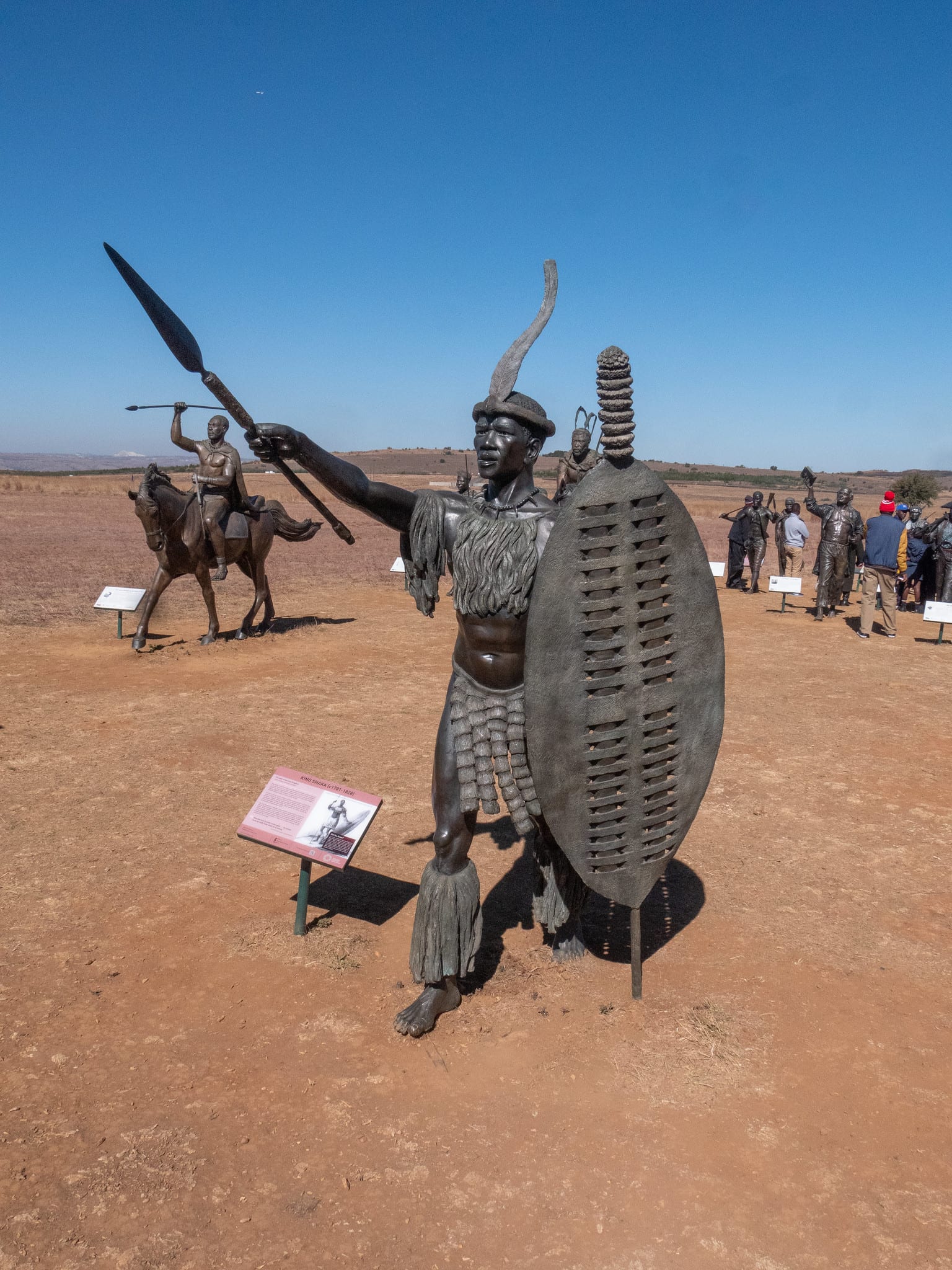
Photo credit: Jay Calvin (Flickr) | Shaka kaSenzangakhona (1780s -1828) Bronze Statue – ‘Long March to Freedom’ Monument
When the bill presented to the new post-Apartheid Parliament of South Africa in 1996 omitted Shaka Day from the proposed Public Holidays Bill, the Inkatha Freedom Party (IFP), a South African political party with a large Zulu membership, strongly objected to the bill. Eventually, a compromise was reached between the Parliament and the ANC (African National Congress), and it was decided that a national holiday would be created where South Africans of all cultures and creeds could come together and celebrate their diverse cultural heritage – Giving rise to Heritage Day!
“When our first democratically-elected government decided to make Heritage Day one of our national days, we did so because we knew that our rich and varied cultural heritage has a profound power to help build our new nation.”
– Late former President Nelson Mandela in an address marking Heritage Day in 1996
In recent years, Heritage Day has further evolved and become synonymous with National Braai Day. Some call it Shisa Nyama or Ukosa, while others call it a braai. Regardless of what term you use, the intention remains the same – Gathering around a fire, enjoying good food, good company and celebrating your culture and heritage with friends, family, and the ones you love.
Why is Heritage Day Important in South Africa
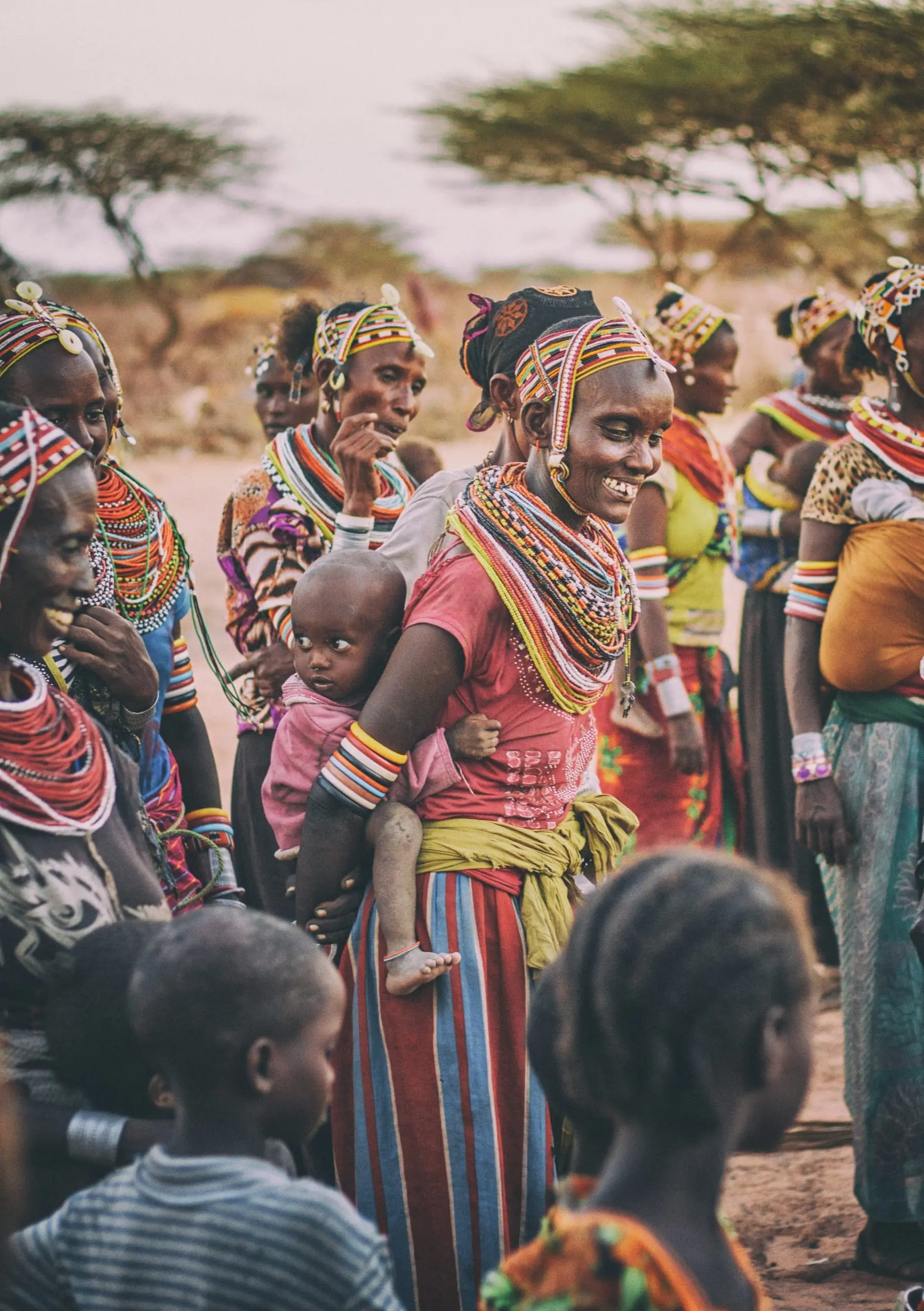
South Africa ranks among the 10 most culturally diverse countries in the world. A county’s relative diversity is determined based on several factors and high-level considerations, including: Level of ethnic diversity; Number of immigrants; Number of spoken languages; Number of religious beliefs; Number of political parties; Level of religious freedom; LGBT rights and freedom; and Level of personal liberty. Each of these categories are further divided into sub-categories, to ultimately determine the level of cultural diversity in any given country.
In addition to being one of the most culturally diverse countries, the population of South Africa is one of the most complex and diverse in the world. It is because of this intricate and vast diversity that Heritage Day is so important in South Africa and should be celebrated by all its people. National Heritage Day is dedicated to recognizing the cultural wealth of our nation in its entirety. By acknowledging, embracing, and celebrating our various cultures, traditions, and heritage against the background of our unique diversity, we build pride in ourselves, our fellow South Africans, and our nation as we remember the difficulties and hardships of the past, share in the victories of the present, and raise hope for the future.
One of the most important aspects of Heritage Day is the fact that it exposes us as South Africans to different people, cultures, traditions, beliefs, and religions we may never have been exposed to or encountered otherwise. It encourages us to step outside of our own ‘cultural bubble’, and urges us to learn, grow, explore, and experience the vibrant and diverse range of cultures that exists within our glorious rainbow nation. And, in turn, allow us to understand, appreciate, recognize, and respect each culture and everything it embodies.
At the end of the day, we are ALL South Africans, and our ability to grow and learn from each other is not only endless, but a gift. This will further allow us to grow as individuals and contribute to a more unified South Africa.
Heritage Day therefore provides a great opportunity for all South Africans to put their differences in politics, perspectives, and opinions aside, to unite and come together in a single shared purpose and objective – To celebrate South Africa’s profound history and heritage TOGETHER AS ONE NATION!
Living Heritage
Another important aspect of South Africa’s heritage that should not be forgotten is living heritage. In essence, living heritage is the foundation of all communities and an essential source of identity and continuity. The various aspects of living heritage include: Cultural tradition; rituals; oral history; popular memory; performance; indigenous knowledge systems; techniques and skills; and the holistic approach to nature, society, and social relationships. In South Africa, the term ‘living heritage’ is used interchangeably with the term ‘intangible cultural heritage’.
Why is living heritage important and what role does it play? Living heritage plays a vital role in promoting cultural diversity, reconciliation, social cohesion, economic development, and peace. In every South African community, there are living human treasures who possess a high degree of knowledge, skills and history pertaining to different aspects of diverse living heritage. It is important for South Africans to reclaim, restore and preserve these various aspects of living heritage in order to promote and accelerate its use in addressing the various challenges communities are facing today.
South African Cultures
South Africa is the Rainbow Nation, a title that captures the country’s cultural and ethnic diversity. As mentioned, the population of South Africa is one of the most complex and diverse in the world.
South Africa’s black population is divided into four major ethnic groups; namely Nguni (Zulu, Xhosa, Ndebele, and Swazi), Sotho, Shangaan-Tsonga, and Venda. There are numerous subgroups within these main ethnic groups of which the Zulu and Xhosa (two subgroups of the Nguni group) are the largest.
The majority of South Africa’s white population (about 60%) is of Afrikaans descent, with many of the remaining 40% being of British or European descent. South Africa’s coloured population have a mixed lineage, which often comprises the indigenous Khoisan genes combined with African slaves that were brought here from all over the continent, and white settlers.
Languages in South Africa
South Africa has eleven official languages:
- English (9.6%)
- Afrikaans (13.5%)
- Ndebele (2.1%)
- Sepedi (9.1%)
- Xhosa (16%)
- Venda (2.4%)
- Tswana (8%)
- Southern Sotho (7.6%)
- Zulu (22.7%)
- Swazi or SiSwati (2.5%)
- Tsonga (4.5%)
In addition to its eleven official languages, many other languages from all over the world are frequently spoken in South Africa, some of which include: Portuguese, Greek, Italian, French, Chinese etc.

Heritage Day is one of the most important National Holidays in South Africa. It is vital to both the nation as a whole and its people that it continues to be recognized, commemorated, and celebrated.
Despite the many differences that exist amongst the various South African cultures, South Africa’s strong sense of unity around longstanding traditions has always remained integral. When needed, our rainbow nation always comes together as a force to be reckoned with.
Contact Secret Africa
+27 21 204 6073
Email: [email protected]
Address: Workshop17, 17 Dock Road, V&A Waterfront, Cape Town, 8005
Important Pages
- Privacy Policy
- Terms & Conditions
- Newsletter Sign Up

This site uses cookies. By continuing to browse the site, you are agreeing to our use of cookies.
Cookie and Privacy Settings
We may request cookies to be set on your device. We use cookies to let us know when you visit our websites, how you interact with us, to enrich your user experience, and to customize your relationship with our website.
Click on the different category headings to find out more. You can also change some of your preferences. Note that blocking some types of cookies may impact your experience on our websites and the services we are able to offer.
These cookies are strictly necessary to provide you with services available through our website and to use some of its features.
Because these cookies are strictly necessary to deliver the website, you cannot refuse them without impacting how our site functions. You can block or delete them by changing your browser settings and force blocking all cookies on this website.
These cookies collect information that is used either in aggregate form to help us understand how our website is being used or how effective our marketing campaigns are, or to help us customize our website and application for you in order to enhance your experience.
If you do not want that we track your visist to our site you can disable tracking in your browser here: Click to enable/disable Google Analytics tracking.
We also use different external services like Google Webfonts, Google Maps and external Video providers. Since these providers may collect personal data like your IP address we allow you to block them here. Please be aware that this might heavily reduce the functionality and appearance of our site. Changes will take effect once you reload the page.
Google Webfont Settings: Click to enable/disable Google Webfonts.
Google Map Settings: Click to enable/disable Google Maps.
Vimeo and Youtube video embeds: Click to enable/disable video embeds.
You can read about our cookies and privacy settings in detail on our Privacy Policy Page.

See More Stories Like This

- Bahasa Indonesia
- Slovenščina
- Science & Tech
- Russian Kitchen
Khabarovsk: Keystone of the Russian Far East
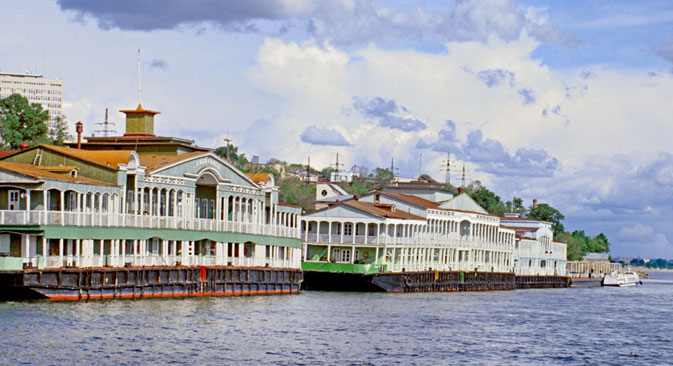
Photographs by William Brumfield
By rail, the city of Khabarovsk in the Russian Far East is a six-day, 5,300 mile journey from Moscow. Given the distance, it’s unsurprising that most visitors prefer to make the trip by air. The nine-hour flight has the added advantage of giving travelers a dramatic overview of the Amur River on the approach.
Indeed, Khabarovsk is a city of two great strategic rivers: the Amur, which flows eastward along the border with China; and the Ussuri, which flows northward some 560 miles from its origins in the southern Sikhote-Alin Mountains, not far from the Sea of Japan. The confluence of these two rivers near Khabarovsk, and the state boundaries they define have created one of the most important geopolitical zones in northern Asia.
Russian explorers attempted to gain control of the north bank of the Amur as early as the 1640s, but Russia was compelled to abandon the area by the Treaty of Nerchinsk, signed in 1689. Russian troops did not return to the region in substantial numbers until the mid-19 th century, under the leadership of Governor-General Nikolai Muravyov.
He was later given the title “Amursky” for his role in acquiring the territory for the Russian empire. In the Treaty of Aigun (1858), negotiated with the Qing Dynasty, China ceded to Russia territory north of the Amur and east of the Ussuri.
Khabarovsk arose as a consequence of the Treaty of Aigun. The first Russian settlement was established in May 1858 by a detachment of Siberian troops under the command of Captain Yakov Dyachenko. The post was initially named Khabarovka in homage to the renowned 17th-century Cossack leader Yerofei Khabarov, who explored the area.
The settlement rapidly expanded, and by 1864 it already had a formal plan for development on hilly terrain along the left bank of the Amur. A telegraph line to Vladivostok began operating in 1868, and a proper river port was completed in 1874. By the end of 1880, Khabarovsk had gained over 4,000 inhabitants and an official status as a town.
How to get there
To get to Khabarovsk from Moscow of St. Petersburg take a regular flight. The trip takes approximately 7,5 hours.
Entrepreneurs looking to capitalize on the development of river trading routes were quick to settle in the young town, which offered considerable potential for commerce with China. Progress in transportation also led to increased government authority. In 1884, Khabarovsk became the administrative center of a vast area stretching from the Amur River to the Pacific.
The town’s status was further enhanced in late May 1891 when the heir to the throne, Tsarevich Nicholas Alexandrovich (subsequently Nicholas II) included Khabarovka on the itinerary of his nine-month-long world tour.
At the time of his visit, the town unveiled a heroic monument to Muravyov-Amursky by the noted sculptor Alexander Opekushin. Dismantled during the Soviet period, the monument has since been restored to a prominent position overlooking the river. In 1893, the town’s name was changed from Khabarovka to the more formal Khabarovsk.
Perhaps the greatest catalyst for the town’s early growth was the completion of a rail line from Vladivostok in 1897. Khabarovsk now had a direct link to a growing international port, even as it controlled interior river traffic over the extensive territory of the Amur River basin.
The town’s strategic location was not lost on military planners, who developed local machine factories to equip the armed forces of the Far East. At the same time, Khabarovsk, like the rest of Russia, experienced severe labor and military unrest in 1905-06 following the country’s defeat in the Russo-Japanese War.
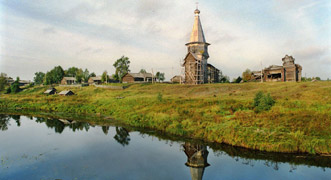
With the return to stability under Prime Minister Pyotr Stolypin (1862-1911), Khabarovsk continued its rapid growth. During the three decades from 1884 to the beginning of World War I, the population increased more than 10-fold. And in 1908, Khabarovsk became the headquarters of the Amur River Flotilla, with responsibility for patrolling the long frontier with Manchuria.
In 1914, connections were improved with the Trans-Siberian Railway, which gave Khabarovsk access to distant Moscow and St. Petersburg. At that time, however, the rail route to the Russian Far East still went through Manchuria along the Chinese Eastern Railway.
The town was linked directly to eastern Siberia only in 1916, with the completion of a bridge across the Amur just to the northwest of Khabarovsk. Built in difficult conditions within three years, the bridge was one of the major achievements of Russian engineering.
To this day the attractive, often imposing architecture of central Khabarovsk reflects the prosperity of the town at the turn of the 20 th century. Using an eclectic mixture of neoclassicism and medieval Russian elements, architects designed enduring, well-built structures for housing, commerce and administration. A peculiar local feature was the use of high quality, unstuccoed red brick for the structure, with gray brick for decorative trim.
The most visible indicator of prosperity and rising consumer demand was the large department store. Firms such as Kunst and Albers, which had stores in several towns, and the Pyankov Brothers used architecture to create an impressive display for retail trade. The large Plyusnin building, subsequently converted to the Regional Library, contained one of the town’s many banks. The best of these buildings are on the main street, which is named after Muravyov-Amursky.
Other historic buildings display the style moderne that was fashionable at the beginning of the 20 th century, with traces of traditional Russian decoration. The best example is the former building of the city council, now carefully restored.
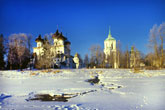
The Shrines of Kargopol: Preserving the art of the Russian North
The devastation of World War I occurred far from Khabarovsk, and the city actually grew with expanding military production. But the civil war following the Bolshevik Revolution caused major damage and disruption.
The last major battles of the Civil War occurred near Khabarovsk. Red partisan forces recaptured the town in early 1920, but they were suddenly attacked by the Japanese in April. Fierce fighting led to significant destruction in the central district. Instability continued until December 1921, when the city was retaken by a White army led by Viktorin Molchanov.
At the battle of Volochaevka in February 1922, Molchanov’s defenses were breached and Khabarovsk was retaken by Red forces, but not without further damage to the area, including partial demolition of the magnificent Amur River Bridge. Authority was vested in the Far Eastern Republic, a Communist ally that formally merged with the new Soviet state in November 1922.
During the Soviet period, the expansion of Khabarovsk accelerated thanks to its strategic military, industrial and administrative position. The pace of growth is reflected in modernist buildings designed by prominent Constructivist architects such as Ilya Golosov, who built the large complex for the House of Soviets in 1929-30.
In the 1930s the Gulag concentration camp empire expanded and prison labor was used in construction. A number of building projects in Khabarovsk were undertaken by the NKVD, which preferred a pompous neoclassical style. Relics of that time include the GlavDalStroi Building and the Commune House, all on Muravyov-Amursky Street.
World War II, like the first, occurred far from Khabarovsk, but the city played a major role in defending the Far East from a Japanese attack. And it served as headquarters during the brief Soviet-Japanese War in August 1945

Liavlia and Zaostrovye: Enduring traditions in the Arkhangelsk Region
Greatly expanded after the war, Khabarovsk maintained its momentum into the post-Soviet period. The city’s vitality is reflected in the improved appearance of Muravyov-Amursky Street, from a renovated Lenin Square to Cathedral Square, with its new Dormition Cathedral visible from the Amur. In 2004 the Transfiguration Cathedral was consecrated on Glory Square near the river.
With a population of just over 600,000, Khabarovsk has witnessed a building spree of contemporary apartment houses in colorful post-modernist forms. And the city’s good management was acknowledged in 2000 when it was chosen as the headquarters of the Far Eastern Federal District.
In the late summer of 2013 the Khabarovsk area experienced a record-setting flood of the Amur, but the main part of the city — on high ground — avoided the worst of the destruction. Among the city's promising economic developments is its pivotal role in the massive "Strength of Siberia" gas pipeline project, which will link the gas fields of Yakutia to the rapidly expanding Chinese market. With its well-maintained central district, Khabarovsk preserves its heritage as it looks to the future.
All rights reserved by Rossiyskaya Gazeta.
to our newsletter!
Get the week's best stories straight to your inbox
This website uses cookies. Click here to find out more.
- Trip Planner
- Private Tours
- Small Group Tours
- Two Capitals
- City Breaks
- Trans-Siberian
- River Cruises
- Russia & Beyond
4-star edition of the private 9-day tour of the Russian capitals
5-star edition fo the private 9-day tour of Moscow & St. Petersburg
13-day in-depth discovery of Moscow, Kazan, and St. Petersburg
7-day tour designed to harness the best of the Venice of the North
11-day private discovery of Moscow, St. Petersburg, and the Golden Ring
Your Russia Getaway
Fill out the short trip survey to receive a personalized itinerary from a destination expert.
- Travel guide
- Before you go
- What to see
Russia Trip Planner
Learn about the dos and the don'ts for your amazing trip to Russia
- Our Partners
- Reservation Policies
Rated 9/10 on the Trustpilot review platform
- My itineraries
- Chat with us
- Trip survey
Groups & Agents
- For Suppliers
+1 (888) 744-6056
- North America : +1 (888) 744-6056
- Oceania and Australia : +61261888118
Khabarovsk, Russia
You are here, about khabarovsk.
Khabarovsk is one of the most significant and beautiful cities of Russia's Far East. It stands on the right bank of the Amur River along the scenic Trans-Siberian railway and almost touches the Chinese border.
The city of Khabarovsk played a crucial role in East - Russian history and is famous for its historic sights, monuments of architecture of different eras, religious buildings, lovely parks, gardens, and artificial lakes which surprise its visitors with impressive fountain shows.
Khabarovsk History
Founded in 1858, the city is now loved by Chinese travelers and those who are going on iconic train journeys along the world's longest railway from Siberia. After days of relentless taiga, people reach this vibrant city with multiple attractions, plenty of historical sights from the tsarist-era, and a number of places to try traditional Russian cuisine. Khabarovsk is indeed a charming city that deserved to be on your travel itinerary. Especially, if you are the legendary Trans-Siberian is on your travel radar.
We suggest beginning your Khabarovsk tour from the famous monument erected in honor of Nikolay Muravyov - Amursky, one of the best-known explorer of East Siberia, a general, and the founder of the city.
Continue your Khabarovsk trip with a riverside walk along the picturesque Nevelsky Embankment and pass through the third tallest church (35 feet) in all Russia - Spaso-Transfiguration Cathedral standing on top of a hill. Take in the spectacular location and view of this Cathedral and its classic golden domes, dominating the city skyline and being visible from a large distance.
Your Trans-Siberian itinerary would become even better if you include a visit to the famous Khabarovsk Bridge as well. The railway bridge goes over the Amur River and is considered to be the longest bridge on the Trans-Siberian route.
Best Things to Do in Khabarovsk
- Stop by the Nikolay Muravyov - Amursky monument
- Visit the gorgeous Spaso-Transfiguration Cathedral
- Take a picture by the renown Khabarovsk Bridge over the Amur River
Top Attractions in Khabarovsk

The Kamchatka peninsula is perhaps one of the most beautiful locations in the world. With about 300 volcanoes, 29 of which are still active, the mountains dazzle visitors.
All Attractions in Khabarovsk
More about khabarovsk.
- Call us now
- Request a call
- Chat on WhatsApp
- Start Live chat
- Contact via email

Moscow & St. Petersburg Small Group Tours Private Tour Packages Trans-Siberian Trips Russian River Cruises Moscow Tour Packages St. Petersburg Tours All Russia Tours
Why Travel to Russia Best Time to Visit Russia Russian Visa Information Tips Before Traveling Tips on Arrival Russian Currency Moscow Travel Guide Read More in Our Blog
Hermitage Museum Church of the Savior on Blood The Kremlin Sergiev Posad, Golden Ring Kizhi Island The Red Square Siberia Lake Baikal
Fla. Seller of Travel Ref. No. ST39939 All Rights Reserved © 2024 About Us | Testimonials | Our Blog | Terms of Service | Privacy Policy

- Visit Our Blog about Russia to know more about Russian sights, history
- Check out our Russian cities and regions guides
- Follow us on Twitter and Facebook to better understand Russia
- Info about getting Russian visa , the main airports , how to rent an apartment
- Our Expert answers your questions about Russia, some tips about sending flowers

Russian regions
- Amur oblast
- Buryat republic
- Chukotka okrug
- Jewish autonomous oblast
- Kamchatka krai
- Khabarovsk krai
- Komsomolsk-on-Amur
- Magadan oblast
- Primorye krai
- Sakha republic
- Sakhalin oblast
- Zabaikalsky krai
- Map of Russia
- All cities and regions
- Blog about Russia
- News from Russia
- How to get a visa
- Flights to Russia
- Russian hotels
- Renting apartments
- Russian currency
- FIFA World Cup 2018
- Submit an article
- Flowers to Russia
- Ask our Expert
Khabarovsk city, Russia
The capital city of Khabarovsk krai .
Khabarovsk - Overview
Khabarovsk , the administrative center of Khabarovsk Krai, is one of the largest industrial, transport, cultural, educational, and scientific centers of the Far East of Russia. This city is located at the intersection of international railway and air transport routes on the right bank of the Amur River, near the border with China.
The population of Khabarovsk is about 613,500 (2022), the area - 383 sq. km.
The phone code - +7 4212, the postal codes - 680000-680150.
Khabarovsk city flag
Khabarovsk city coat of arms.
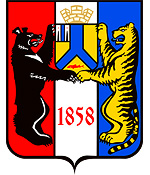
Khabarovsk city map, Russia
Khabarovsk city latest news and posts from our blog:.
25 August, 2017 / Russian banknotes and the sights depicted on them .
1 August, 2017 / Khabarovsk - the view from above .
21 December, 2016 / Flying over diverse Russia .
21 April, 2013 / Khabarovsk - the center of the Russian Far East .
16 January, 2011 / Siberian tiger walking the highway .
More posts..
History of Khabarovsk
Foundation of khabarovsk.
Until the mid-19th century, the territory of present-day Khabarovsk, in accordance with the Nerchinsk Treaty, was located on a neutral territory, not delimited between the Qing Empire (China) and the Russian Empire. In 1858, the Aigun Treaty was signed, according to which the entire left bank of the Amur River passed into the possession of the Russian Empire, the right bank of the Amur to the Ussuri River became part of China.
After signing the treaty, the 13th Siberian Line Battalion was sent to establish settlements along the Amur. One of the new settlements was named Khabarovka - in honor of Yerofey Khabarov, a 17th-century Russian explorer known for his attempts to colonize this region for Russia. In 1864, the first plan for the development of the future town was made. By 1865, there were 1,294 residents in Khabarovka - mostly soldiers and officers.
Initially, only military buildings were constructed in Khabarovka. Five years after the foundation, there were already 167 buildings in the settlement including the house of the commander, barracks, warehouses, residential buildings, and trading shops. Due to its very convenient location at the confluence of the Amur and Ussuri rivers, Khabarovka began to develop very quickly.
Following the military settlers, civilians began to arrive from all parts of the Russian Empire including Moscow and St. Petersburg. At that time, their main occupations were hunting, fur trade, and fishing. The settlers were provided with free fertile land, which also contributed to the influx of new residents to Khabarovka.
More historical facts…
Khabarovsk - a regional center of the Russian Far East
In 1873, the first elementary school was opened in Khabarovka. The Russo-Chinese treaty of 1881 allowed duty-free trade in the 50-kilometer land border zone and the goods of Chinese and English manufacturers could be bought half cheaper here.
By 1880, Khabarovka was already a rather large settlement of Primorsky Oblast with a population of 2,036 people (47.3% - military, 23% - bourgeois, 21.3% - foreigners (mainly Chinese workers), 1.4% - representatives of the indigenous population, and 7% - officers, clergy, merchants, industrialists).
At that time, the capital of Primorsky Oblast was Nikolayevsk (today’s Nikolayevsk-on-Amur), but Khabarovka had a more advantageous geographical position, as it was located at the crossroads of all communication lines from Vladivostok and the coast. In 1880, Khabarovka became the center of Primorsky Oblast and transformed into a town. In 1893, the town was renamed Khabarovsk.
In 1894, the Amur (Khabarovsk) department of the Russian Geographical Society was created with a museum (the Khabarovsk Regional Museum of Local Lore) and a library. In 1895, the first vocational technical school was opened - the railway school of the Ministry of Railways. During these years, a lot of stone houses were built in Khabarovsk. Most of them are preserved in the city to this day.
In 1897, the first train departed from the Khabarovsk railway station. The Ussuri Railway connected Khabarovsk with Vladivostok. The population of the town was about 14,900 people.
Khabarovsk in the 20th century and beyond
In 1916, the construction of a railway bridge over the Amur was completed and Khabarovsk was connected by the Amur Railway with Eastern Siberia.
November 14, 1922, after the liquidation of the Far Eastern Republic, Khabarovsk became part of the Russian Soviet Federative Socialist Republic. On December 6, 1923, the administrative center of the Russian Far East was transferred to Khabarovsk from Chita. In 1925, the railway bridge over the Amur was restored.
On January 4, 1926, Far Eastern Krai was formed with its center in Khabarovsk. The population of the city was about 52 thousand people. On October 23, 1934, the Far Eastern Agricultural Research Institute was established in Khabarovsk. In 1936, Khabarovsk was connected by rail with Komsomolsk-on-Amur.
By 1939, the population of Khabarovsk increased to 200 thousand people. From June 1940, the command of the Far Eastern Front was deployed in Khabarovsk. From August 1945, the headquarters of the High Command of Soviet Forces in the Far East and the command of the 1st Far Eastern Front were stationed in the city.
On March 16, 1946, the Khabarovsk Drama Theater was created. In 1949, a trial was held in Khabarovsk in the case of former members of the Japanese Kwantung Army. The most significant changes in the city occurred in the post-war decades.
In 1960, the Khabarovsk television studio began broadcasting. On October 24, 1964, the Khabarovsk Shipyard produced the first “Rocket”, a famous Soviet hydrofoil ship. On September 1, 1967, the Khabarovsk Institute of Physical Education (the Far Eastern State Academy of Physical Culture) was opened. On September 1, 1968, the Khabarovsk State Institute of Arts and Culture was opened.
In 1975, the population of Khabarovsk was about 502,000 people. By 1990, Khabarovsk was formed as a multifunctional economic center of national importance. The population reached its maximum of 616 thousand people.
In May 2000, federal districts were formed in the Russian Federation. Khabarovsk became the center of the Far Eastern Federal District. In 2008, the railway station was completely renovated. In 2009, the reconstruction of the bridge across the Amur was finished. In late summer - early fall of 2013, Khabarovsk was affected by flooding, which became the strongest over the entire observation period since 1897.
On December 13, 2018, the center of the Far Eastern Federal District was moved from Khabarovsk to Vladivostok.
Pictures of Khabarovsk
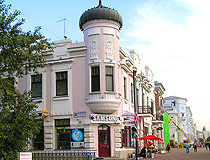
Pre-revolutionary architecture in Khabarovsk
Author: Tanya Yakushina
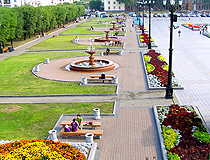
Lenin Square in Khabarovsk
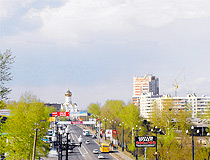
Khabarovsk cityscape
Author: Santiago Rios
Khabarovsk - Features
Khabarovsk is often considered the capital of the Russian Far East. The city is located in Asia, in the southern part of the Central Amur Lowland, near the confluence of the Amur and Ussuri rivers, about 17 km from the border with China. The city stands on the elevated right bank of the Amur River, the relief of which is diverse and complex.
The distance from Moscow to Khabarovsk by roads is about 8,250 km, to Vladivostok - 750 km. About half of the population of Khabarovsk Krai lives in this city. Khabarovsk is a bit similar to the large cities of the Volga region. Here you can see similar new buildings wedging chaotically into the cityscape and an abundance of pre-revolutionary architecture.
Although Khabarovsk can’t boast of Vladivostok’s seaside flavor or all-Russian sights, it’s still worth coming here, and to some extent this is inevitable: all routes of the Khabarovsk region converge here.
The climate in Khabarovsk is temperate monsoon, with snowy cold winters and hot humid summers. The average temperature in January is minus 20.5 degrees Celsius, in July - plus 21.8 degrees Celsius. The number of sunny days per year is significantly higher than in a number of large cities of Russia (up to 300 days a year; in Moscow and St. Petersburg - about 100).
From November to March, very dry and frosty continental air with clear and sunny weather is established over the city. The best time to visit Khabarovsk is June and September when the weather is not too hot.
Khabarovsk is a major hub at the junction of water, air, rail, and road communications from the north and west of the country, Primorye, Sakhalin, and the ports of Khabarovsk Krai. The Trans-Siberian Railway passes through the city, as well as the railway line to Komsomolsk-on-Amur. This city is the connecting point of the federal highways “Amur” (Chita - Khabarovsk), “Ussuri” (Khabarovsk - Vladivostok), and Khabarovsk - Komsomolsk-on-Amur. Urban transport includes trams, trolleybuses, buses, minibuses, and taxis.
The international airport “Novy” offers regular flights to Moscow, Yekaterinburg, Vladivostok, Yakutsk, Novosibirsk, Irkutsk, Magadan, Petropavlovsk-Kamchatsky, Yuzhno-Sakhalinsk, Seoul (South Korea), Tokyo (Japan).
The design of the Russian 5,000 rubles banknote features Khabarovsk. On its front side you can see the monument to Muravyov-Amursky (the founder of Khabarovsk and Vladivostok) on the background of the embankment of the Amur River. The Khabarovsk bridge over the Amur is depicted on the back of the banknote. At the time of construction, in 1916, it was one of the longest bridges in the world and was called “The Amur Miracle”.
The fork-shaped cross depicted on the coat of arms of Khabarovsk symbolizes the location of the city at the confluence of the Amur and Ussuri rivers. Fish reminds of the main occupation of the first residents - fishing. The white-breasted bear and the Amur tiger are endemic to the Amur land.
Main Attractions of Khabarovsk
Khabarovsk Regional Museum named after Nikolai Grodekov . The expositions of this museum feature exhibits on the paleontology and geology of the Amur Region, the flora and fauna of the Far East, the fish of the Amur basin, the culture of the indigenous peoples of the Amur region and Russian settlers, the history of the development of the Russian Far East, the events of the Civil War in the Far East (1917-1922). The museum building (1896) is a monument of architecture, culture, and history of federal significance. Shevchenko Street, 11.
Amur (Khabarovsk) Cliff - the most beautiful place in the city located in the center of Admiral Gennady Nevelsky Embankment running along the Amur River bank, near the Khabarovsk Regional Museum. In 1858, a military detachment led by commander Yakov Dyachenko landed here. He decided to set up his camp here, which later became a military settlement, and even later - the village of Khabarovka.
Here you can find a good observation deck with beautiful views of the Amur River and the city. Nearby, there is a park with the famous monument to the Governor-General of Eastern Siberia Muravyov-Amursky. This monument is depicted on the Russian banknote of 5,000 rubles. Shevchenko Street, 15.
The Far Eastern Art Museum - the largest museum of fine art in the Russian Far East. The collection of this museum has about 16 thousand works of art of the Old Russian, Russian pre-revolutionary, Soviet, and modern periods. Here you can also see the Far Eastern and Western European fine art, the art of the peoples of the Amur Region, works of Russian icon painting of the 15th-20th centuries. Shevchenko Street, 7.
Military History Museum of the Far Eastern Military District . The museum exhibits documents, photographs, banners of all periods of the history of the Far Eastern Military District, starting with the Russian Civil War in the Far East and to our time. In the courtyard, there is an exhibition of military equipment. Shevchenko Street, 20.
Khabarovsk Assumption Cathedral - the first stone building and one of the largest churches in Khabarovsk. The original building was demolished in 1930. In 2002, the cathedral was restored according to a new architectural project in the Russian style with some eclectic features. The new cathedral as a whole differs from the original building, but has some of its elements. In particular, the shapes of the arches and domes of the new cathedral were taken from the old version. Sobornaya (Komsomolskaya) Square.
Khabarovsk Bridge (“The Amur Miracle”) - one of the main symbols of Khabarovsk. The construction of this bridge completed the Trans-Siberian Railway in 1916. This bridge is depicted on the Russian 5,000 Rubles banknote. In the 1990s, the bridge was reconstructed, its old openwork spans were dismantled. Nearby, you can find the Museum of the History of the Amur Bridge with the last preserved span of the original design.
Lenin Square - the central and most picturesque square in Khabarovsk. In size, it is second only to Red Square in Moscow. It is framed by buildings of various styles of architecture, size, and number of storeys. There are beautiful fountains, well-groomed flower beds, and trimmed lawns here.
Severny Park - a cascade of three small but very picturesque ponds. In the middle of the green lawns and trees there are small arbors, as well as a snow-white wedding palace. Nearby, you can see the Church of Seraphim of Sarov. Kakhovskaya Street, 1.
Khabarovsk city of Russia photos
Churches of khabarovsk.
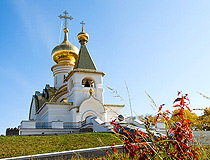
Church of St. Seraphim of Sarov in Khabarovsk
Author: Sergey V. Makogonov
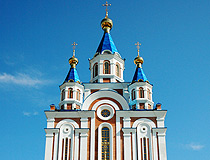
Assumption Cathedral in Khabarovsk
Author: Jason Rogers
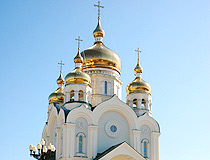
Transfiguration Cathedral in Khabarovsk
Lenin monument in Khabarovsk
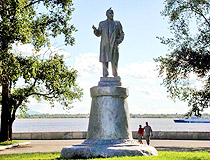
Lenin Monument in Khabarovsk
Author: Kudinov D.M.
The questions of our visitors
The comments of our visitors.
I lived in Khabarovsk for many years. I was an American working there. I spoke fluent Russian and pretty much blended right in. No one guessed I was a foreigner. I made lots of truly wonderful friends some of whom became like family.
I walked about any time I felt like it and never had any sort of problems. I lived in several other cities, including Moscow and St. Petersburg and Khabarovsk is my favorite. If I could figure out a way to live there permanently, I would with pleasure.
I had the pleasure of flying a number of flights to Khabarovsk in the early 1990's. I met some wonderful people, one very special person. While the city was in a semi state of disrepair, it still held the historic beauty of its earlier years.
It has been over 20 years since my visit and I would very much like to return. Perhaps not in this life time but the memories live on.
- Currently 2.86/5
Rating: 2.9 /5 (217 votes cast)
Advertisement
Supported by
Prince Harry Now Officially Resident in U.S., Documents Show
For years, Harry and his wife, Meghan, have considered California home. This week, he updated his residency in a corporate filing.
- Share full article

By Megan Specia
Reporting from London
The document filed on Wednesday at Britain’s corporate registrar, Companies House, was just a few lines long. But its purpose was to formally update the country of residency for one “Prince Henry Charles Albert David Duke of Sussex” — otherwise known as Prince Harry.
For years, Harry and his American wife, Meghan, have considered California home. The document updated the residency of the British royal to the United States for official paperwork for his business Travalyst Limited, a nonprofit sustainable travel initiative.
The paperwork was just a bureaucratic formality. But it underscores just how far Harry, 39, has come from his days as a central member of the royal family in the country of his birth, to a very different life with his wife and children in California. It also comes at a time of turmoil for the House of Windsor.
Harry and Meghan moved to Montecito, Calif., after stepping back from royal duties in 2020 , amid a rift with the royal family.
Prince Harry said in February that he had considered becoming a U.S. citizen , telling ABC’s “ Good Morning America ,” “It’s a thought that has crossed my mind but it’s not a high priority for me right now.”
But there had been little in the way of official confirmation of Harry’s residency status until this week. The filing indicates the change of residency dates to June 29, 2023, the day that Buckingham Palace confirmed the couple had vacated Frogmore Cottage, their British home. Queen Elizabeth II had offered the home to the couple when they were married in 2018 .
It is unclear what type of U.S. visa or residency permit Harry holds, despite efforts by conservative activists in the United States to ascertain them, including a current lawsuit. He could be eligible for a green card through his marriage to Meghan, a U.S. citizen. Immigration lawyers have pointed out that he could also be entitled to an A-1 diplomatic visa, available to members of a reigning royal family.
The Heritage Foundation, a conservative research institute, launched a lawsuit against the Department of Homeland Security in June 2023 to see documents related to Harry’s visa, saying the group had a right to see them as part of research into whether his application for residency should have been rejected because of past drug use.
Harry, the fifth in line of succession to the British throne, wrote in “Spare,” his 2023 memoir , that he had used cocaine and other drugs in the past. Last month, former President Donald J. Trump told the right-wing British broadcaster GB News that he would take “appropriate action” if Harry were found to have lied on a visa application.
The Heritage Foundation had sought the documents specifically to investigate how the prince had been admitted, since some visas require applicants to answer questions about past drug use and legal violations.
The Department of Homeland Security declined to make those documents public when they were requested last year, stating that there was no “public interest in disclosure sufficient to override the subject’s privacy interests.”
But last month, a federal judge ordered the department to submit documents related to Harry’s visa for the court to review, in order to determine whether they should be released under the Freedom of Information Act.
Back in Britain, the royal family has been going through a tumultuous time, with King Charles III and Catherine, Princess of Wales , both revealing cancer diagnoses earlier this year, and few other members of the royal family available to carry out public duties.
On Thursday, Prince William — Catherine’s husband and Harry’s elder brother — attended his first royal engagement since his wife announced last month that she was being treated for cancer.
Megan Specia reports on Britain, Ireland and the Ukraine war for The Times. She is based in London. More about Megan Specia

IMAGES
COMMENTS
January 2, 2024 by My Courses Editor. This page contains an essay guide for Grade 10 History learners on how to write a Heritage Day essay (introduction, body, and conclusion). On the 24th of September every year in South Africa, there is a great celebration of all cultures and heritages of all South Africans. This was after the Inkatha Freedom ...
Conclusion: In conclusion, Heritage Day serves as a poignant reminder of the importance of preserving and celebrating our shared cultural and natural heritage. It is a testament to the resilience ...
Heritage Day, also known as National Braai Day, is a vibrant and significant celebration in South Africa. Held annually on September 24th, it serves as a platform to honor the diverse cultural heritage of the nation. This descriptive essay aims to capture the essence and significance of Heritage Day, highlighting its rich traditions, cultural ...
Essay Guideline. Important: you should include relevant images to go with your key points. You can find plenty of images on the internet, as long as you provide the credits/sources. When you write your Heritage Day essay as a grade 10 student, you will get great marks if you include the following structure: Introduction: Provide a brief history ...
Introduction for an Essay on Heritage Day Heritage Day, also known as National Braai Day, is a significant day in South Africa's history, celebrated annually on the 24th of September. This day is a celebration of the diverse cultural heritage that makes up the Rainbow Nation. It is a time for South Africans to reflect on their shared ...
Foundation essay: This is a longer ... In the past few years, many South Africans have come to associate Heritage Day with a good opportunity to do just that. On this day, some South Africans eat ...
250 Words Essay on World Heritage Day Introduction. World Heritage Day, celebrated on 18th April every year, is a global observance that underscores the collective responsibility of the international community to preserve and respect cultural and natural heritage. This day is an opportunity to raise public awareness about the diversity of ...
Heritage Day: Celebrating Diversity and Preserving Traditions Introduction: Heritage Day is a celebration that holds great significance in various countries around the world. It is a day dedicated to recognizing and honoring the rich tapestry of cultural diversity that defines a nation's identity. This essay explores the importance of Heritage Day, its origins, and the […]
The Significance of Heritage Day. Heritage Day, also known as "Braai Day," serves as a reminder of the importance of embracing and cherishing South Africa's cultural mosaic. It encourages South Africans to take pride in their roots, whether they are Zulu, Xhosa, Afrikaans, Indian, or any of the other diverse groups that call the country home.
This essay describes the significance of Heritage Day in South Africa. The student traces the roots of the holiday, the role that Nelson Mandela played in making it a national holiday, and the traditions associated with it. This essay received a B by one of Kibin's paper graders.
Essay On Heritage Day. 1002 Words5 Pages. The day of reconciliation now known as heritage day is celebraaated all over South Africa on 16 December. Regardless of race, culture and beliefs, heritage day promises a future that sees no colour and a future with no discrimination where all South Africans black or white come together as one.
Heritage Day is a public holiday celebrated on 24 September in South Africa that recognises and celebrates the cultural diversity of the country. In its essence, the day embraces and celebrates the true meaning of why we call ourselves the Rainbow Nation. South Africans mark the day by wearing traditional outfits, eating traditional foods ...
A total of 30 Cultural World Heritage sites have been identified in India as of 2020. Some of the most well-known heritage sites include Hill Forts of Rajasthan, Red Fort Complex, Humayun's Tomb, Mountain Railways of India, Elephanta Caves, Fatehpur Sikri, Sun Temple, Ellora Caves and the Taj Mahal. The third classification of heritage is ...
History of Heritage Day. In KwaZulu-Natal, 24 September has been observed as 'Shaka's Day,' in commemoration of the legendary Zulu king, King Shaka Zulu . When the proposed Public Holidays Bill before the New South African Parliament omitted Shaka Day, the Inkatha Freedom Party (IFP), a South African political party with a large Zulu membership ...
Heritage Day is a public holiday in South Africa . It is celebrated every year on September 24. Heritage Day is a day when people concentrate on the importance of South Africa's cultural heritage.
Heritage Day also made me ask the question, "Is the dream of a true rainbow nation still possible?" Following the recent unrest and violence which took place in our country, particularly the murders in Phoenix, and with the narrative in the media of racism, and many conversations taking place referencing the 1949 riots, you begin to wonder ...
Essay. In South Africa, Heritage Day, celebrated on the 24th of September, is a profound national holiday that recognises and celebrates the cultural wealth of the nation.It's a day that reflects the country's complex history, marked by apartheid, colonialism, and the struggle for freedom, and how its diverse cultures contribute to the nation's identity.
Heritage Day was initially known as 'Shaka Day' or 'Shaka's Day', a day dedicated to commemorating the legendary King Shaka Zulu on the presumed date of his death in 1828. Shaka Zulu played an important role in uniting different Zulu clans into one cohesive Zulu nation in Kwa-Zulu Natal. To this day, thousands of people gather at the ...
Heritage Day (Afrikaans: Erfenisdag; Xhosa: Usuku Lwamagugu, Usuku lokugubha amasiko) is a South African public holiday celebrated on 24 September. On this day, South Africans are encouraged to celebrate their culture and the diversity of their beliefs and traditions, in the wider context of a nation that belongs to all its people.
Heritage and cultural treasures are everywhere you go in Khabarovsk. Hop on a 1950s tram and travel from the railway station (which was rebuilt in 1935) along the boulevards and main avenues of ...
Photographs by William Brumfield. By rail, the city of Khabarovsk in the Russian Far East is a six-day, 5,300 mile journey from Moscow. Given the distance, it's unsurprising that most visitors ...
Khabarovsk is one of the most significant and beautiful cities of Russia's Far East. It stands on the right bank of the Amur River along the scenic Trans-Siberian railway and almost touches the Chinese border. The city of Khabarovsk played a crucial role in East - Russian history and is famous for its historic sights, monuments of architecture of different eras, religious buildings, lovely ...
This city is located at the intersection of international railway and air transport routes on the right bank of the Amur River, near the border with China. The population of Khabarovsk is about 613,500 (2022), the area - 383 sq. km. The phone code - +7 4212, the postal codes - 680000-680150. Local time in Khabarovsk city is April 24, 8:30 pm ...
The Heritage Foundation, a conservative research institute, launched a lawsuit against the Department of Homeland Security in June 2023 to see documents related to Harry's visa, saying the group ...